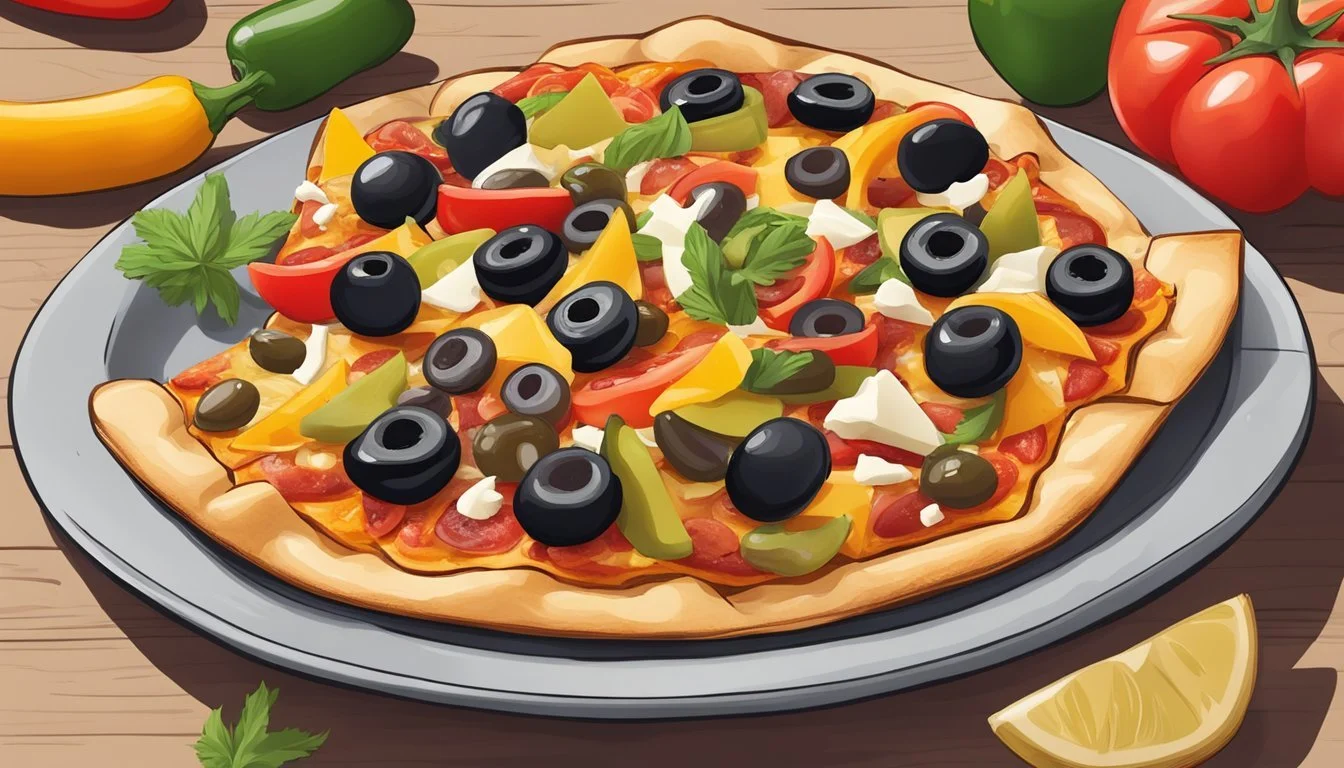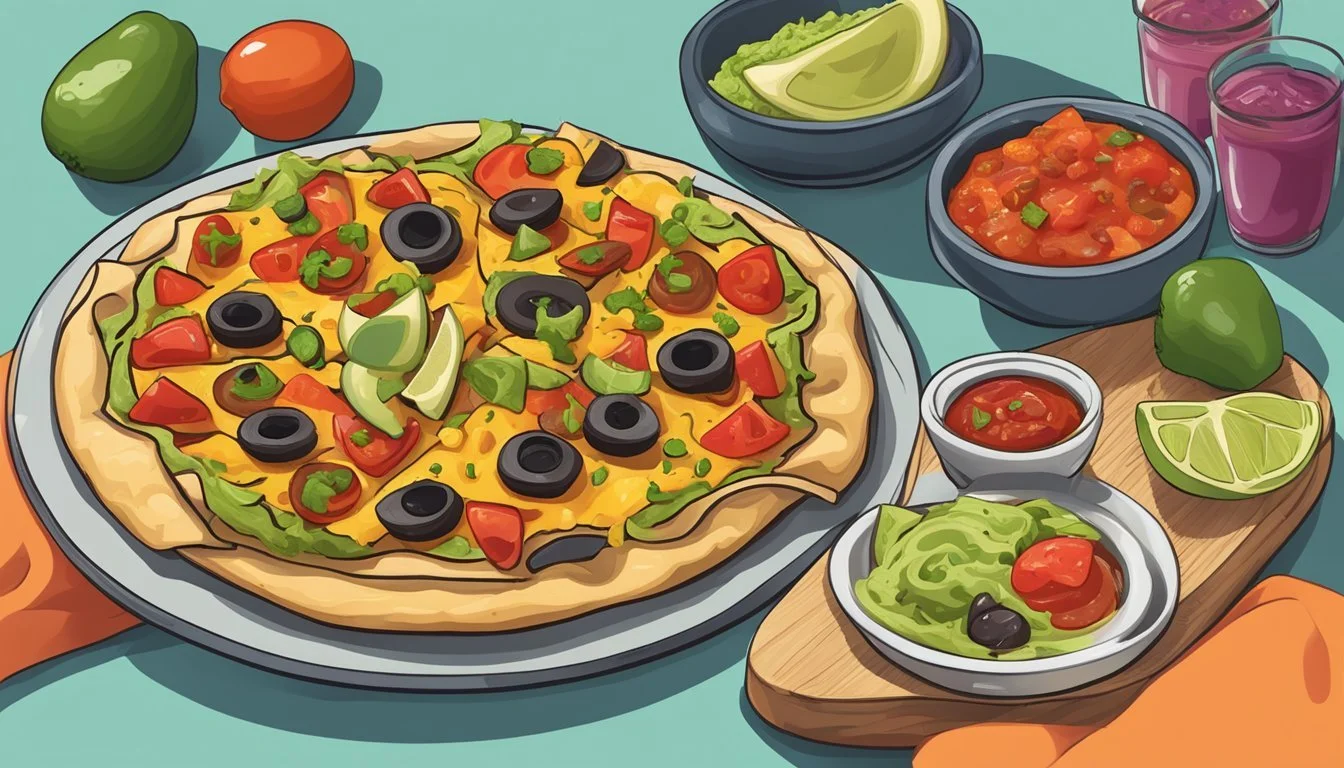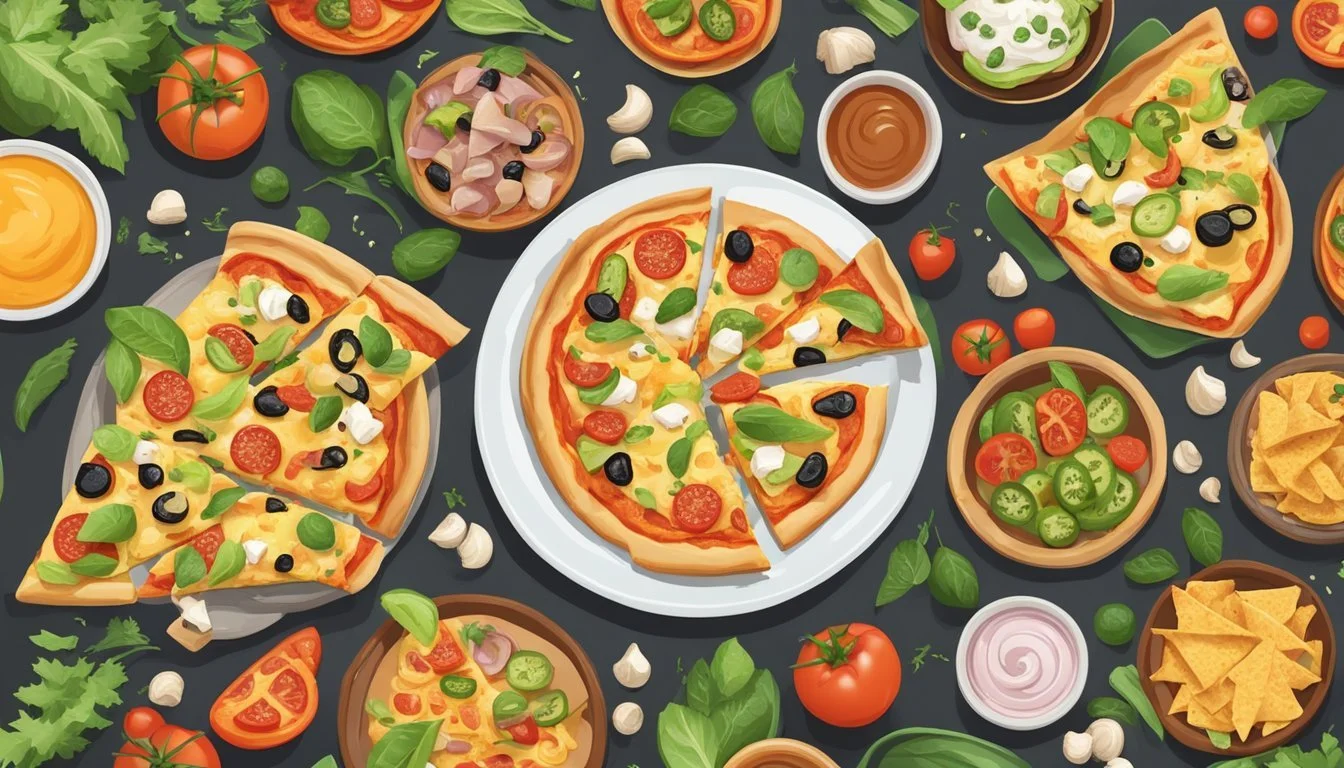Is Pizza Nachos Vegan?
Unveiling the Truth About This Snack Hybrid
Pizza (What wine goes well with pizza?) nachos, a hybrid dish combining the flavors of pizza with the format of nachos, can be a vegan delight when prepared with the right ingredients. Traditional nachos typically consist of tortilla chips layered with cheese and various toppings, while pizza is known for its yeasted dough base, tomato sauce, cheese, and a plethora of toppings. The fusion of these two dishes results in a culinary creation where crispy tortilla chips or pizza dough "chips" serve as a base, topped with marinara sauce, vegan cheese alternatives, and plant-based toppings consistent with conventional pizza flavors.
The question of whether pizza nachos are vegan depends on the specific ingredients used in the dish. Veganism excludes all forms of animal products, so for pizza nachos to be vegan, every ingredient from the base to the toppings must be plant-based. Vegan cheese sauces, which can be made from nuts, soy, or other plant derivatives, are key to replicating the experience of melted cheese. Substituting meat toppings with vegetables, legumes, or vegan meat alternatives is another way to ensure the dish remains within the realms of a vegan diet. Vegan pizza nachos can capture the essence of both pizza and nachos without compromising on taste, allowing vegans and non-vegans alike to enjoy this creative fusion dish.
What Are Pizza Nachos?
Combining the cheesy layers of traditional nachos with the rich flavors of pizza, pizza nachos are a creative culinary twist enjoyed as both an appetizer and snack.
Definition and Origin
Pizza nachos take the concept of classic nachos but swap out typical Mexican toppings for pizza-inspired ingredients such as marinara sauce, mozzarella cheese, and various pizza toppings (What wine goes well with pizza toppings?) like pepperoni or vegetables. They originated from a playful fusion of Italian and Mexican cuisines, where they cater to the craving for a dish that's both familiar and novel.
Popularity as an Appetizer and Snack
As an appetizer, pizza nachos present a perfect sharing dish that encourages communal dining, often found in casual dining spots and party menus. Their ease of preparation and customizable nature have also contributed to their growing popularity as a versatile snack, capable of satisfying diverse taste preferences with a range of toppings similar to those found on traditional pizzas.
Understanding Veganism
Veganism involves a diet and lifestyle free from animal products. Here, the focus is on what vegans eat and the plant-based substitutes they commonly use.
Vegan Diet Basics
A vegan diet excludes all animal products, including meat, dairy, and eggs. Instead, individuals rely on a variety of plant-based foods to meet their nutritional needs. The staples of a vegan diet typically include:
Grains like rice, wheat, and oats
Legumes such as beans, lentils, and chickpeas
Fruits and Vegetables
Plant-based Milks and other dairy alternatives from soy, almond, or oats
When it comes to toppings for dishes such as pizza nachos, vegans opt for a range of vegetables, beans, or even fruit-based salsas.
Vegan Substitutes for Common Ingredients
Transitioning to a vegan lifestyle means finding alternatives for common non-vegan ingredients. Here are some notable substitutions:
Cheese: Vegan cheese is often made from nuts (like cashews), soy, or tapioca. Brands vary in taste and texture, but many melt similar to dairy cheese, making them suitable for nachos.
Meat: Vegan meat substitutes are typically based on soy, wheat protein, or legumes, and are designed to replicate the flavor and texture of animal meats.
Substitutes must not only mimic the taste and texture of their non-vegan counterparts but also provide essential nutrients. The development of these alternatives allows vegans to enjoy a wide range of dishes without animal products.
Ingredients of Traditional Pizza Nachos
Traditional pizza nachos are a delightful fusion dish that combines the crispy, triangular goodness of nacho chips with the rich, savory toppings of a classic pizza. These appetizers are widely enjoyed for their mouth-watering flavors and diverse textures.
Typical Ingredients and Toppings
Chips: The base of the dish usually consists of corn tortilla chips laid out on a baking sheet or skillet.
Cheese Sauce: A cheesy component is essential. Traditional versions may use melted mozzarella or a homemade cheese sauce.
Toppings: Standard pizza toppings include sliced onion, diced tomatoes, sliced black olives, jalapeños, and pepperoni. Vegetables like green peppers and mushrooms can also be found layered atop the chips.
Marinara Sauce: A tomato-based marinara sauce is often drizzled over the chips prior to baking.
Olive Oil: Some recipes call for a drizzle of olive oil on the chips before adding the other toppings to crisp them up further in the oven.
Common Non-Vegan Ingredients
Cheese: Most traditional pizza nachos include dairy cheeses like mozzarella.
Pepperoni: A popular meat topping that is typically made from pork or a mix of pork and beef.
Cheese Sauce: If store-bought, this could contain dairy or other animal derivatives.
For individuals following a vegan diet, it’s important to look for plant-based alternatives to these components. Vegan cheese shreds or sauces can replace traditional cheese, while meat-free pepperoni made from plant-based proteins is a suitable substitute for regular pepperoni.
Veganizing Pizza Nachos
Traditional pizza nachos are a delightful blend of Italian and Mexican cuisines but often contain animal products. The following subsections detail how one can create a vegan version, ensuring that every component from the cheese to the toppings is plant-based, without sacrificing flavor or texture.
Vegan Alternatives for Pizza Nachos
To create vegan pizza nachos, one must replace traditional pizza dough and tortilla chips with vegan substitutes. They can use a vegan pizza dough that avoids animal products such as milk or eggs. Most commercial tortilla chips are already vegan, but it's important to check the ingredients list to avoid hidden animal derivatives. For the base layer, instead of meat, one might opt for seasoned tofu crumbles or a meatless vegan meat alternative. These provide a similar texture and absorb flavors well, making them a suitable substitute for the beef or pork typically found in nachos.
Vegan Cheese Options
Vegan cheese plays a pivotal role in replicating the melt and stretch of traditional cheese. One can use pre-made vegan mozzarella cheese, which often uses ingredients like coconut oil and tapioca starch to achieve the desired texture. Alternatively, a homemade vegan queso made from blended cashews, nutritional yeast, and spices provides a creamy and tangy flavor similar to traditional nacho cheese. For more convenience, there are also various brands offering shredded or sauce-style vegan cheese options explicitly suited for melting.
Additional Vegan Toppings and Flavors
Toppings are where one can truly personalize their vegan pizza nachos. Classic pizza toppings like black olives, diced bell peppers, and sliced mushrooms can be combined with traditional nacho toppings such as guacamole or salsa. Here's a quick guide to assembling the toppings:
Black Olives: Scatter over the top for a savory note.
Mushrooms: Adds umami; sauté first for extra flavor.
Bell Peppers: Chop and distribute raw for crunch or cook for sweetness.
Guacamole: Dollop on after baking for cool creaminess.
Vegan Meat: Choose from options like vegan pepperoni or sausage, dice, and spread evenly.
Vegan Queso: Drizzle over the layered chips and toppings before baking.
How to Make Vegan Pizza Nachos
Vegan pizza nachos are a unique twist combining two popular dishes into one delectable vegan snack, perfect for game day or a fun meal. They are easy to make and can be customized with an array of toppings to suit any preference.
Step-by-Step Instructions
Preheat the oven to 375°F (190°C) and prepare a baking sheet by lining it with parchment paper, ensuring easy cleanup and no sticking.
Roll out pizza dough on a floured surface to about ¼ inch thickness, then cut into triangle shapes resembling nacho chips.
Bake the dough triangles for about 5-7 minutes until partially cooked. This will allow them to crisp up and support the toppings without becoming soggy.
Prepare the toppings by sautéeing vegetables like green peppers, mushrooms, and red onion. For added flavor, one could include vegan pepperoni.
Layer the ingredients on the pre-baked dough triangles: start with a spoonful of marinara sauce, followed by vegan cheese sauce and your choice of prepared toppings.
Baking and Assembly Tips
Bake the assembled pizza nachos for 20-25 minutes, or until the chips begin to brown and the cheese melts. Watch carefully to prevent burning.
Use a cast-iron skillet or rimmed baking dish if preferred; these can go directly into the oven and make an attractive serving dish.
To ensure the toppings are evenly distributed, build the pizza nachos in layers, repeating the toppings on each new layer of chips.
Leftover pizza nachos can be stored in airtight containers, although they are best enjoyed fresh from the oven for optimal crispness.
Vegan Pizza Nachos Variations
Vegan Pizza Nachos can be tailored to suit a range of dietary preferences and spice tolerances. From fiery toppings to gluten-free options, making pizza nachos vegan caters to many tastes and requirements.
Spicy and Non-Spicy Versions
For those who love some heat in their bites, spicy vegan pizza nachos can include a generous sprinkle of chili powder and cumin. One can also add sliced jalapeños or a spicy vegan cheese sauce to intensify the flavors. It's vital to use quality chili powder to ensure that the heat is accompanied by a rich, earthy undertone, which complements other ingredients.
Those preferring milder flavors can substitute spicy elements with sweet bell peppers and opt for a non-spicy vegan cheese sauce. Non-spicy pizza nachos can still be flavorful by incorporating herbs and a varied medley of toppings such as mushrooms, red onions, and vegan pepperoni.
Gluten-Free and Allergy-Sensitive Options
Creating gluten-free vegan pizza nachos involves using corn tortilla chips and ensuring that the gluten-free variants do not come in contact with gluten-containing products. Checking labels is crucial, as some products may contain traces of gluten.
When catering to allergy-sensitive diets, every ingredient must be scrutinized. Vegan sour cream can be a delectable topping, but it is important to read labels for potential allergens. For those with nut allergies, for example, one should select a vegan cheese alternative that doesn't contain nuts.
Serving Suggestions
Vegan pizza nachos are a versatile dish perfect for casual gatherings, offering a delightful blend of classic pizza flavors and the crunch of nachos. They can be enjoyed as a hearty snack during game days or served as a unique dinner option.
How to Serve Vegan Pizza Nachos
One can serve vegan pizza nachos directly on a large platter or pizza pan to allow guests to grab as they mingle. Providing a variety of toppings and sauces on the side lets everyone customize their portion according to their preference. Arrange the nachos in a way that cheese sauce and toppings like vegan pepperoni and olives are evenly distributed, ensuring each chip is coated with savory goodness.
Suggested Toppings:
Vegan Pepperoni
Diced Bell Peppers
Sliced Black Olives
Fresh Diced Tomatoes
Chopped Cilantro
Drizzle of Lime Juice
To Note: It's best to serve the nachos immediately after baking to maintain the optimal texture of the chips and the meltiness of the cheese.
Pairings and Dips
Vegan pizza nachos pair well with a variety of dips beyond the traditional marinara sauce. Options like vegan sour cream or a creamy avocado dip complement the dish's flavors and add a smooth contrast to the crunch. For those who favor heat, a spicy salsa can elevate the nachos to another level.
Dip Suggestions:
Vegan Sour Cream
Creamy Avocado Dip
Spicy Salsa
Classic Marinara Sauce
Serving Tip: Present the dips in separate bowls with spoons, allowing guests to add as much or as little as they like to their nachos. Pairings like a chilled craft beer or a sparkling lemonade can complete the dining experience, catering to a range of tastes and preferences.
Storing and Reheating
When it comes to pizza nachos, maintaining the quality of leftovers is key to enjoying them a second time around.
Best Practices for Leftovers
For storing leftover pizza nachos, it's important to put them in an airtight container. Layer a paper towel at the bottom to absorb excess moisture, which helps keep the chips from becoming soggy. Leftovers should be placed in the refrigerator and are best eaten within two days to ensure freshness.
Reheating pizza nachos warrants a method that will restore the crispiness of the chips and melt the toppings evenly. Preheating the oven to 375°F (190°C) is a standard approach. Spread the nachos evenly on a baking sheet lined with parchment paper to prevent sticking and bake for a few minutes until the toppings are suitably melted and the chips regain their crunch. Microwave reheating is not recommended as it tends to make the chips soft and chewy.
By following these guidelines, one can enjoy their pizza nachos with much of the original texture and flavor retained.
Nutritional Information
In examining the nutritional profile of vegan pizza nachos, it is essential to consider both the caloric content and the distribution of macronutrients, as well as the specific health advantages contributed by vegan toppings like nutritional yeast, black beans, and red onions.
Calories and Macro Breakdown
When assessing the nutritional value of vegan pizza nachos, it is common to find a significant variation in caloric content based on the chosen ingredients and their portions. A serving size typically ranges from 250 to 500 calories, majorly influenced by the quantity of nachos and the density of toppings used.
Key macronutrients include:
Protein: Vegan pizza nachos often incorporate protein sources such as black beans, preserving the dish's hearty texture.
Fats: The usage of ingredients like avocado or vegan cheese contributes healthy fats, which are essential for body functions.
Carbohydrates: The base typically consists of pizza dough or tortilla chips, supplying the body with energy through complex carbs.
Health Benefits of Vegan Toppings
Vegan toppings chosen for pizza nachos not only provide excellent flavor but also enhance the dish's nutritional profile.
Nutritional Yeast:
Rich in B-vitamins and protein, nutritional yeast imparts a cheesy flavor while boosting the nutrient content.
Black Beans:
These legumes are a powerhouse of protein and fiber, supporting muscle health and digestive wellness.
Red Onions:
Known for their anti-inflammatory properties, red onions add crunch and nutrition with a low caloric footprint.
Including a spectrum of colorful, fresh vegetables can further enrich the nutritional value and antioxidant content of vegan pizza nachos, making them not just a treat for the taste buds but also a healthy option for conscious eaters.
Finding Vegan Ingredients
When creating vegan pizza nachos, selecting the right vegan alternatives is crucial to replicating the flavors and textures you love. It involves careful shopping for plant-based products and being aware of reliable brands that offer quality and taste.
Shopping for Vegan Products
Consumers should look for vegan cheese that melts well and has a pleasing flavor. Ingredients to look for in vegan cheese include nuts, such as cashews, for creaminess and nutritional yeast for a cheesy flavor. Seek out specialized health food stores or larger supermarkets with a section dedicated to vegan and vegetarian products, as they are more likely to carry a variety of vegan cheeses suitable for pizza nachos.
One should also be attentive to other components like plant-based meats and dairy-free sauces, ensuring they do not contain any animal derivatives. Reading labels is paramount, as some products may appear vegan but contain hidden animal-based ingredients like casein, which is derived from milk.
Recommended Brands
For those new to vegan cooking, certain brands have established reputations for quality and flavor in the vegan community.
Tofutti: Known for their wide range of dairy-alternative products, Tofutti offers a variety of vegan cheeses that can be used for pizza nachos.
Daiya: A well-known brand that provides dairy-free cheese alternatives which are widely acclaimed for their melting qualities, making them a good choice for nacho topping.
Follow Your Heart: Offers a comprehensive line of vegan products, including cheeses that melt, stretch, and add a rich flavor to any dish.
When selecting vegan cheese, it's beneficial to refer to user reviews or ask for recommendations in vegan communities to find the option that best suits your taste and needs for pizza nachos.
Conclusion
Pizza nachos can be made vegan by using ingredients such as vegan cheese, plant-based proteins, and dairy-free sauces. These vegan versions aim to replicate the classic flavors and textures of traditional pizza nachos without the use of animal products.
Recap and Final Thoughts
In this article, the focus was on exploring whether pizza nachos can be adapted for a vegan diet. The adaptations include using dairy-free cheese sauce, vegan-friendly pizza dough, and meat substitutes like textured vegetable protein (TVP). It has been established that vegan pizza nachos are not only possible, but they can also be diverse and flavorful with a variety of vegan toppings, such as vegan pepperoni, bell peppers, and mushrooms. The provided recipes utilize different baking methods to ensure a crispy and satisfying experience, similar to their non-vegan counterparts.










